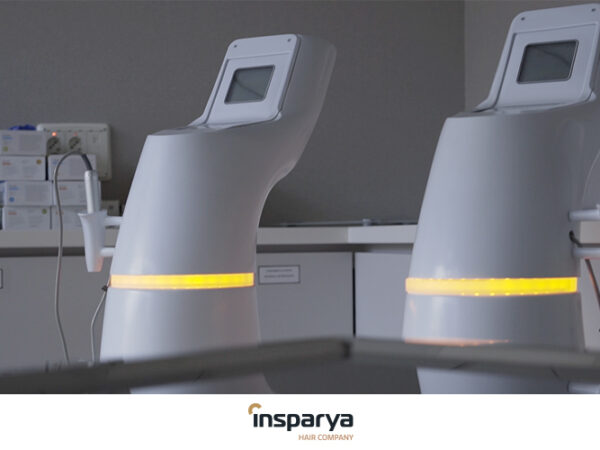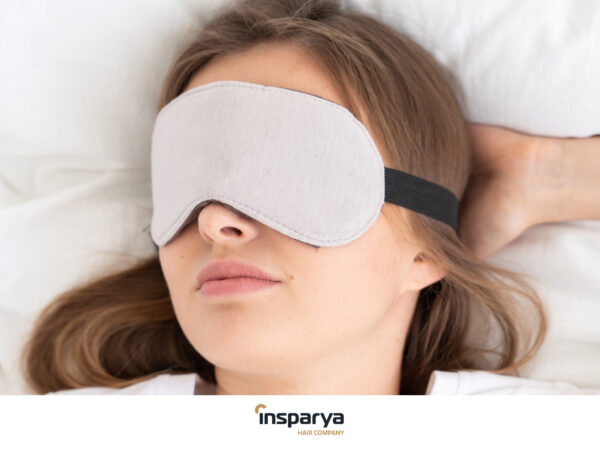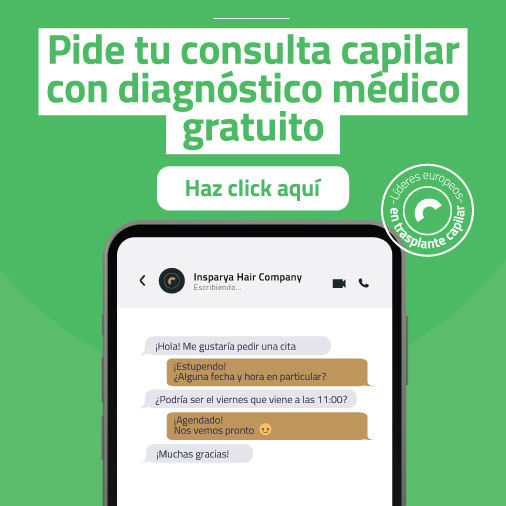
Mesoterapia capilar: tratamiento eficaz para fortalecer y regenerar el cabello
- ¿Qué es la mesoterapia capilar y cómo funciona?
- ¿Qué hace la mesoterapia capilar?
- Diferencias entre mesoterapia capilar y otros tratamientos para la caída del cabello
- Mesoterapia capilar con dutasteride: ¿qué es y cómo actúa?
- Beneficios y resultados de la mesoterapia capilar
- Resultados de la mesoterapia capilar: antes y después
- ¿Funciona la mesoterapia capilar? Opiniones y testimonios
- Ventajas de la mesoterapia capilar en hombres y mujeres
- Protocolo y duración del tratamiento
- ¿Cuántas sesiones de mesoterapia capilar se necesitan?
- ¿Cuánto tiempo dura el efecto de la mesoterapia capilar?
- Cuidados y precauciones antes y después del tratamiento
- Seguridad y efectos secundarios de la mesoterapia capilar
- ¿La mesoterapia capilar duele?
- Posibles efectos secundarios de la mesoterapia capilar y mesoterapia dutasteride
- Contraindicaciones y precauciones en el tratamiento capilar
- Precio y accesibilidad del tratamiento de mesoterapia capilar
- ¿Cuánto vale una sesión de mesoterapia capilar?
- Factores que influyen en el precio del tratamiento
- Dónde realizar la mesoterapia capilar
- Mesoterapia capilar: casos y estudios clínicos destacados
- Tratamiento de alopecia androgenética con mesoterapia
- Compuestos utilizados: biotina, niacina, cobre, zinc y otros activos
- Mesoterapia capilar con pistola: innovaciones y eficacia
- Complementos y consejos para potenciar la salud capilar
Tras la caída y el debilitamiento del cabello puede haber causas de lo más variadas, desde la predisposición genética al estrés, los cambios hormonales o ciertas deficiencias nutricionales. Por suerte, existe un tratamiento seguro y eficaz para mejorar la salud capilar. Se trata de la mesoterapia capilar, una técnica indolora muy eficaz para nutrir y rejuvenecer el pelo.
Si estás valorando someterte a este tratamiento, sigue leyendo. Te contamos todo lo que necesitas saber sobre sus beneficios y resolvemos las dudas más frecuentes. Recuerda que cada caso persona es única en Insparya, por lo que te animamos a concertar ya una primera consulta gratuita para obtener tu diagnóstico personalizado.
¿Qué es la mesoterapia capilar y cómo funciona?
Se trata de un tratamiento probado médicamente que resulta muy eficaz para mejorar la salud capilar. Vamos a ver de forma detenida qué es la mesoterapia capilar, cómo se realiza el tratamiento, cuál es su efectividad y cuáles son las dudas más frecuentes en torno a este tratamiento capilar que ofrecemos en Insparya para impulsar la recuperación tras un trasplante capilar o para mejorar la calidad del cabello en general.
¿Qué hace la mesoterapia capilar?
La mesoterapia es una técnica rápida, cómoda y fácil de realizar que consiste en la administración subcutánea, mediante pequeñas inyecciones, de un preparado que activa biológicamente las células de unidades foliculares. Con esto se promueve la producción de un cabello de mayor calidad y resistencia.
Es decir, el proceso de la mesoterapia capilar consiste en suministrar potentes ingredientes al mesodermo, que es la capa media de la piel o dermis. Así se aportan nutrientes activos directamente al folículo piloso, favoreciendo el rejuvenecimiento del cuero cabelludo y, por tanto, el rebrote del cabello.
Entre las acciones más importantes de la mesoterapia capilar destacan:
- Mejorar la microcirculación sanguínea en el cuero cabelludo.
- Aumentar el aporte de oxígeno y nutrientes al folículo piloso.
- Estimular la fase anágena del crecimiento capilar.
- Fortalecer la raíz y el tallo del cabello.
- Mejorar el grosor, la textura y el brillo del pelo.
Es un tratamiento mínimamente invasivo que no requiere anestesia general ni hospitalización, y que permite incorporarse a la vida normal el mismo día.
Diferencias entre mesoterapia capilar y otros tratamientos para la caída del cabello
A menudo se confunde la mesoterapia con otros tratamientos capilares. Sin embargo, hay diferencias claras:
- Mesoterapia capilar: microinyección de vitaminas, minerales y fármacos en el cuero cabelludo.
- PRP capilar: inyección de plasma rico en plaquetas obtenido de la sangre del propio paciente.
- Tricopat: sistema transdérmico sin agujas que combina microincisiones, ondas acústicas y fotobioestimulación LED.
Cada enfoque tiene indicaciones concretas. Por ejemplo, el PRP se centra en regenerar tejidos mediante factores de crecimiento autólogos, mientras que la mesoterapia aporta nutrientes y principios activos directamente al folículo.
Si no sabes cuál es el adecuado para tu caso, consulta con un especialista de Insparya que te orientará de forma personalizada.
Mesoterapia capilar con dutasteride: ¿qué es y cómo actúa?
El dutasteride es un inhibidor de la enzima 5-alfa-reductasa, responsable de transformar la testosterona en dihidrotestosterona (DHT), la hormona que contribuye a la miniaturización del folículo en la alopecia androgenética.
La mesoterapia capilar con dutasteride consiste en inyectar este medicamento de forma localizada en el cuero cabelludo, con el objetivo de bloquear la DHT en la raíz del cabello. De este modo se reduce la caída y se favorece el engrosamiento del pelo.
Su uso debe estar siempre indicado y supervisado por un profesional médico, ya que no todos los pacientes son buenos candidatos para este tratamiento.
Beneficios y resultados de la mesoterapia capilar
Los beneficios de la aplicación de esta técnica son muchos, por lo que es adecuada para casos muy distintos. En general, estos son los beneficios de la mesoterapia más significativos:
- Es un proceso completamente indoloro. Para empezar, la mesoterapia capilar se trata de un proceso que resulta muy poco o nada molesto para el paciente, hasta el punto de que su administración no requiere anestesia local.
- Es un procedimiento sencillo y cómodo. Dado que las microagujas sólo penetran en la piel hasta la capa media, la recuperación es rápida e indolora.
- Retrasa la caída del cabello. La mesoterapia capilar tiene como principal finalidad ralentizar el proceso de caída del cabello de varias formas. Los nutrientes de las inyecciones se eligen específicamente por sus propiedades beneficiosas en esta tarea. Así, la mesoterapia capilar estimula el aumento de la circulación sanguínea en el cuero cabelludo, reduce la inflamación y proporciona a los folículos del cuero cabelludo elementos nutritivos que impulsan el crecimiento del pelo.
- Neutraliza el exceso de DHT (dihidrotestosterona). Una de las causas más frecuentes de la alopecia y la calvicie de patrón masculino se debe a un exceso de dihidrotestosterona (DHT) en quien la padece. La sobreproducción de DHT acorta el ciclo de vida del cabello, lo que puede desencadenar una calvicie prematura. Los nutrientes utilizados en la mesoterapia capilar neutralizan el exceso de DHT, permitiendo así que las raíces del cabello reanuden su ciclo de vida normal para un crecimiento sano y prolongado.
- Reduce la caspa. Un beneficio secundario muy interesante del proceso de la mesoterapia capilar es el rejuvenecimiento del propio cuero cabelludo. La razón es que se estimula la producción de colágeno y elastina, componentes clave para una piel sana. Al mismo tiempo, estas inyecciones promueven el aumento del flujo sanguíneo, lo que contribuye a lograr un cuero cabelludo nutrido y unos folículos pilosos fuertes y sanos. La mesoterapia hace todo esto sin dañar el colágeno existente. Por tanto, solo aumenta la presencia de esta sustancia química beneficiosa en su cuero cabelludo. ¿El efecto? Una piel sana e hidratada que es menos propensa a producir la tan molesta caspa.
Resultados de la mesoterapia capilar: antes y después
Los resultados suelen comenzar a notarse a partir de la tercera o cuarta sesión, aunque cada persona responde de diferente forma. Entre los beneficios más habituales se encuentran:
- Reducción progresiva de la caída.
- Incremento de la densidad capilar.
- Mayor grosor y vitalidad del cabello existente.
- Sensación de cuero cabelludo más sano y equilibrado.
Las imágenes de antes y después son la mejor forma de comprobar estos efectos. Si lo deseas, en tu consulta en Insparya podrás ver casos reales de pacientes que han confiado en este tratamiento.
Si bien los efectos secundarios son raros, hay que tener en cuenta que, después de cada sesión, se deben evitar lugares húmedos como saunas o piscinas y realizar ejercicio físico intenso. Asimismo, es recomendable proteger la zona tratada de la radiación solar.
¿Funciona la mesoterapia capilar? Opiniones y testimonios
La mayoría de pacientes que siguen un tratamiento completo con la mesoterapia capilar de Insparya refieren una mejora significativa en la calidad del cabello y en la confianza personal. No obstante, es importante recordar que la mesoterapia no crea nuevos folículos en zonas con aleopcia, sino que actúa sobre los folículos existentes, reforzándolos.
En Insparya contamos con miles de casos de éxito que avalan la eficacia de la mesoterapia capilar como parte de un enfoque integral. Si tienes dudas, consúltanos para conocer de primera mano las experiencias de otros pacientes.
La mesoterapia capilar es un tratamiento muy efectivo tanto para hombres como para mujeres con diferentes problemas de caída de cabello. Se trata de un procedimiento recomendado por los mejores expertos capilares en todo el mundo. La mayoría de los expertos en cabello coinciden al afirmar que la mesoterapia capilar tiene una tasa de éxito del 92% para la regeneración del cabello.
Ventajas de la mesoterapia capilar en hombres y mujeres
La mesoterapia capilar es adecuada tanto para hombres como para mujeres, para los que tenemos protocolos y fórmulas adaptadas. Sus ventajas principales son:
- Tratamiento ambulatorio y seguro.
- Sesiones cortas, de unos 30 minutos.
- No requiere baja laboral.
- Alta tolerancia y escasos efectos secundarios.
- Puede combinarse con otros tratamientos para potenciar resultados.
Protocolo y duración del tratamiento
¿Cuántas sesiones de mesoterapia capilar se necesitan?
Dependerá siempre de la persona y sus necesidades capilares. En nuestras clínicas realizaremos una evaluación profesional de cada paciente, pero lo más habitual es que la frecuencia de las sesiones se encuentre entre 5 sesiones quincenales seguidas de 5 sesiones mensuales, 10 sesiones quincenales o 10 sesiones mensuales.
En la primera consulta gratuita, el especialista valorará tu caso y diseñará un plan personalizado.
¿Cuánto tiempo dura el efecto de la mesoterapia capilar?
Los resultados se consolidan progresivamente y pueden mantenerse durante varios meses, especialmente si se realizan sesiones de mantenimiento. De lo que no hay duda es que la constancia es clave para prolongar los beneficios de la mesoterapia capilar. Así, el efecto completo de la mesoterapia capilar suele durar entre 12 y 18 meses en la mayoría de los casos.
Cuidados y precauciones antes y después del tratamiento
Para maximizar la eficacia y reducir riesgos es recomendable:
Antes de la sesión:
- Evitar alcohol y antiinflamatorios 48 h antes.
- Lavar el cabello el mismo día o el anterior.
Después de la sesión:
- No lavar la cabeza durante 24 h.
- Evitar exposición solar intensa, sauna o piscina 48 h.
- No rascar la zona tratada.
El equipo médico de Insparya te proporcionará recomendaciones detalladas y aclarará todas tus dudas.
Seguridad y efectos secundarios de la mesoterapia capilar
¿La mesoterapia capilar duele?
Si bien es cierto que el procedimiento puede generar una sensación de leve molestia o de escozor, generalmente se tolera bien. Pero, si prefieres un tratamiento sin agujas, consúltanos sobre el sistema Tricopat, que combina microincisiones mínimas y fotobioestimulación LED y logra estimular el crecimiento del pelo y prevenir su caída.
Posibles efectos secundarios de la mesoterapia capilar y mesoterapia dutasteride
Al consistir en una administración local en el cuero cabelludo, la mesoterapia capilar no tiene prácticamente efectos secundarios ni contraindicaciones. Es por tanto un tratamiento seguro y eficaz desde una perspectiva preventiva de la alopecia, produciendo un incremento de la calidad del pelo producido.
Aún así, pueden presentarse algunas de estas molestias de forma poco frecuente y leve:
- Enrojecimiento o inflamación pasajera.
- Sensibilidad al tacto en la zona tratada.
- Pequeños hematomas que desaparecen en pocos días.
Hay que tener en cuenta que en tratamientos con dutasteride pueden existir restricciones específicas. Por eso es fundamental que sea un médico experto quien evalúe tu caso.
Contraindicaciones y precauciones en el tratamiento capilar
La mesoterapia capilar no está indicada en:
- Embarazo y lactancia.
- Infecciones activas o dermatitis severa.
- Alergia a alguno de los componentes.
- Trastornos hemorrágicos.
Si tienes cualquier patología, coméntalo en la consulta para determinar si es una buena opción para ti.
Precio y accesibilidad del tratamiento de mesoterapia capilar
¿Cuánto vale una sesión de mesoterapia capilar?
El coste puede variar según el protocolo, el número de sesiones y la combinación de principios activos. El presupuesto final se define siempre tras la valoración médica individualizada.
Factores que influyen en el precio del tratamiento
Algunos aspectos que determinan el coste son:
- Número de sesiones necesarias.
- Tipo de compuestos utilizados (por ejemplo, dutasteride).
- Protocolo combinado con otros tratamientos.
- Tecnología utilizada en la aplicación.
En Insparya podemos facilitarte opciones de financiación a medida para que puedas acceder a tu tratamiento con total tranquilidad.
Dónde realizar la mesoterapia capilar
Insparya es un grupo clínico con más de 15 años de experiencia en salud capilar. Contamos con clínicas especializadas en Madrid y otras ciudades de España, dotadas de tecnología de vanguardia y un equipo médico altamente cualificado.
Puedes solicitar tu primera consulta gratuita para recibir un diagnóstico completo y sin compromiso.
Mesoterapia capilar: casos y estudios clínicos destacados
Tratamiento de alopecia androgenética con mesoterapia
La alopecia androgenética es la causa más frecuente de pérdida de cabello tanto en hombres como en mujeres. En estos casos es muy indicada la mesoterapia, especialmente combinada con dutasteride. Este procedimiento ha demostrado ser eficaz para:
- Frenar la miniaturización folicular.
- Estimular el crecimiento en fases iniciales e intermedias.
- Mejorar la densidad capilar.
Compuestos utilizados: biotina, niacina, cobre, zinc y otros activos
Entre los ingredientes más habituales se incluyen:
- Biotina: fortalece la queratina.
- Niacina: mejora la microcirculación.
- Cobre y zinc: contribuyen a la síntesis de colágeno y queratina.
- Ácido hialurónico: hidrata y regenera el cuero cabelludo.
Cada fórmula se adapta a las necesidades de cada paciente.
En Grupo Insparya disponemos de una fórmula exclusiva, MesoHair+. Actúa de manera subcutánea activando biológicamente las células de unidades foliculares y regenerando la epidermis, factores que contribuyen a favorecer la aparición del pelo. Como resultado se reduce la pérdida de cabello y se potencia su crecimiento con mayor calidad y resistencia.
En nuestro preparado se incluye:
- Ácido hialurónico, que va a integrar la fibra de pelo producida, logrando que esta se mantenga más hidratada y sea más resistente a la rotura y a la caída.
- Inhibidores de la 5-alfa-reductasa (factores antiandrogénicos) que bloquean localmente la acción perjudicial de la testosterona en la producción capilar, evitando su transformación en Dihidrotestosterna (DHT). Esto contribuye a frenar la alopecia androgénica.
- Vitaminas, proteínas y sales minerales que se utilizan para la producción de pelo desde el primer momento.
- Factores de crecimiento que van a estimular las unidades foliculares para producir pelo más fuerte y resistente.
- Factores antioxidantes que reducen el estrés oxidativo y así desaceleran el envejecimiento folicular.
Mesoterapia capilar con pistola: innovaciones y eficacia
En algunas clínicas, se utilizan dispositivos automáticos (pistola de mesoterapia) que garantizan una dosificación precisa y homogénea. Esta técnica mejora la comodidad y optimiza la distribución del producto.
Complementos y consejos para potenciar la salud capilar
Productos domiciliarios recomendados para cuidar el cabello
Tras la mesoterapia, conviene complementar con:
- Champús suaves específicos, como los que puedes encontrar en la tienda online de Insparya.
- Sérums y lociones de mantenimiento.
- Una alimentación rica y variada, con nutrientes como proteínas, hierro, zinc, vitaminas del grupo B (sobre todo biotina) y ácidos grasos omega-3
El equipo de Insparya te orientará sobre los productos más adecuados y te pautará una dieta si así lo necesitas.
Cómo combinar la mesoterapia capilar con otros tratamientos capilares
Para potenciar los resultados, es frecuente combinar la mesoterapia con:
- Tricopat. Es un tratamiento transdérmico avanzado que combina microincisiones, ondas acústicas, iontoforesis y fotobioestimulación LED para mejorar la absorción de activos y estimular la regeneración del folículo piloso.
- 4GenInsparya. Dispositivo exclusivo de Insparya diseñado para la aplicación de tratamientos capilares de manera precisa y homogénea. Su tecnología avanzada permite personalizar la dosis y profundidad de los activos, optimizando resultados y reduciendo molestias.
- Fotobiomodulación. Es un tratamiento que utiliza luz láser de baja frecuencia para activar el metabolismo celular, mejorar la microcirculación y fortalecer el folículo piloso. Es indoloro y se aplica como complemento a otros tratamientos capilares.
No hay duda: el enfoque multidisciplinar permite abordar la caída capilar desde todos los ángulos y ser más eficaces para frenarla.
Si estás pensando en dar el paso, solicita tu consulta gratuita con un especialista de Insparya y descubre qué opciones son las más indicadas para ti. Estamos aquí para acompañarte en cada etapa del proceso, con rigor clínico, cercanía y el compromiso de ayudarte a recuperar tu confianza.







